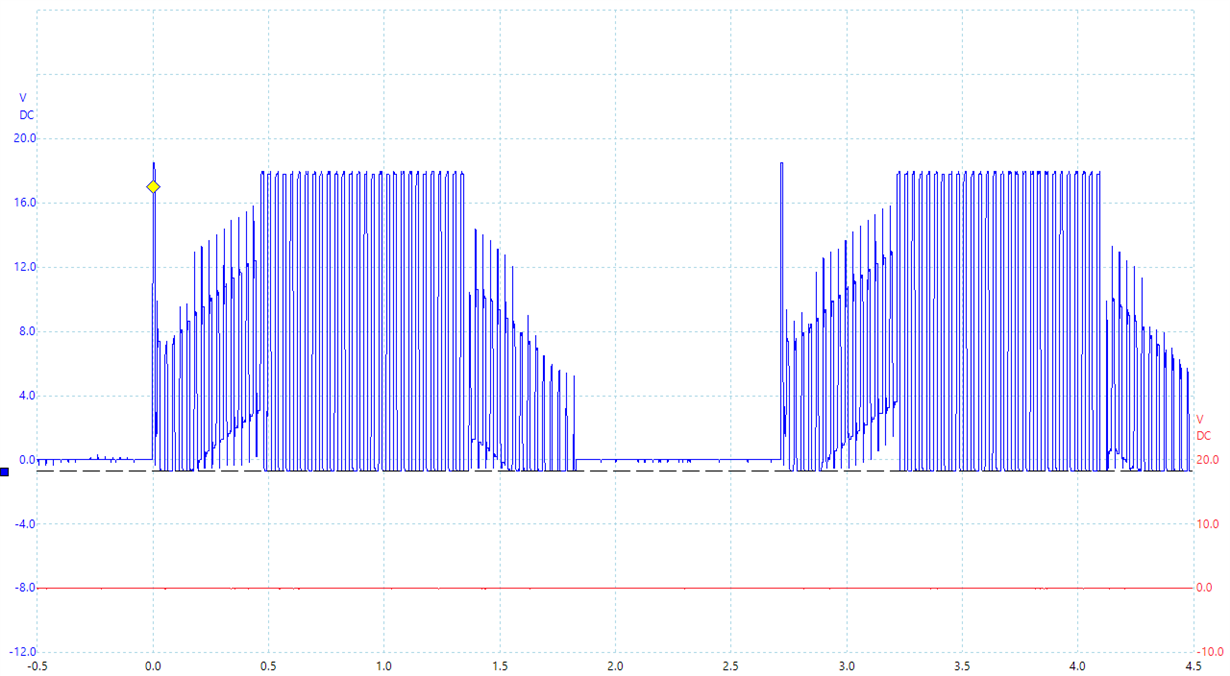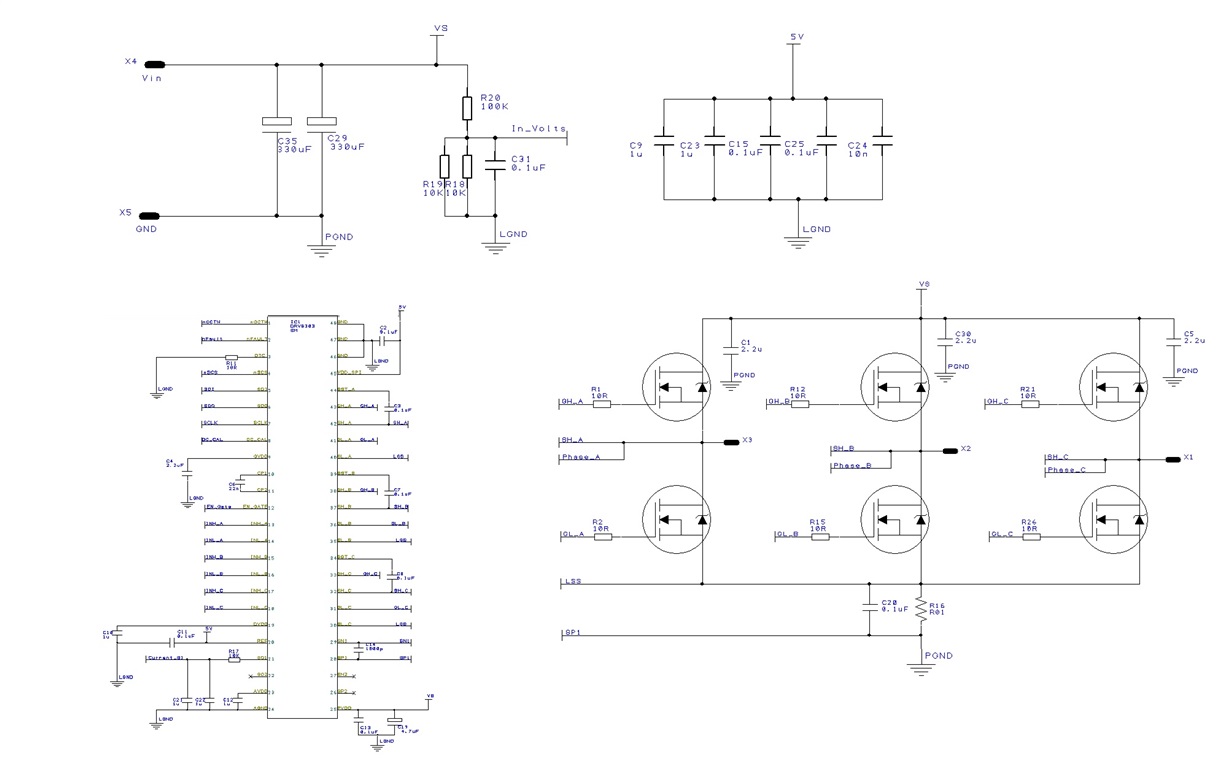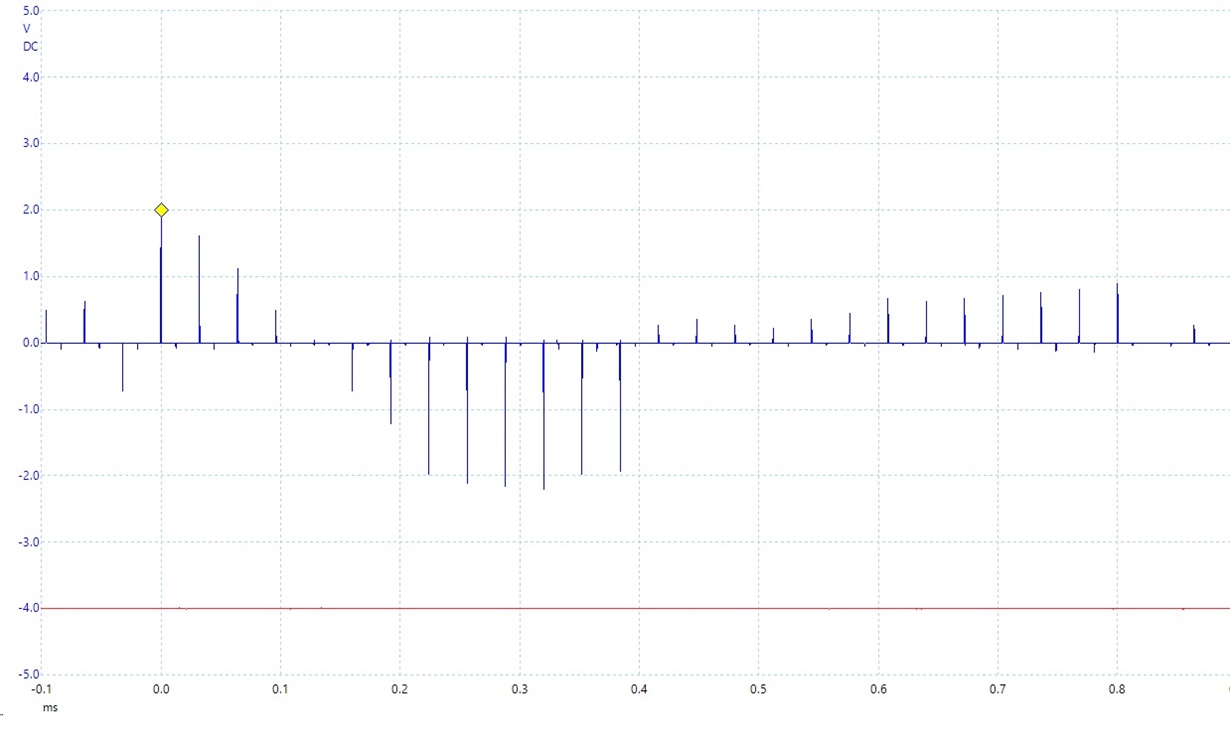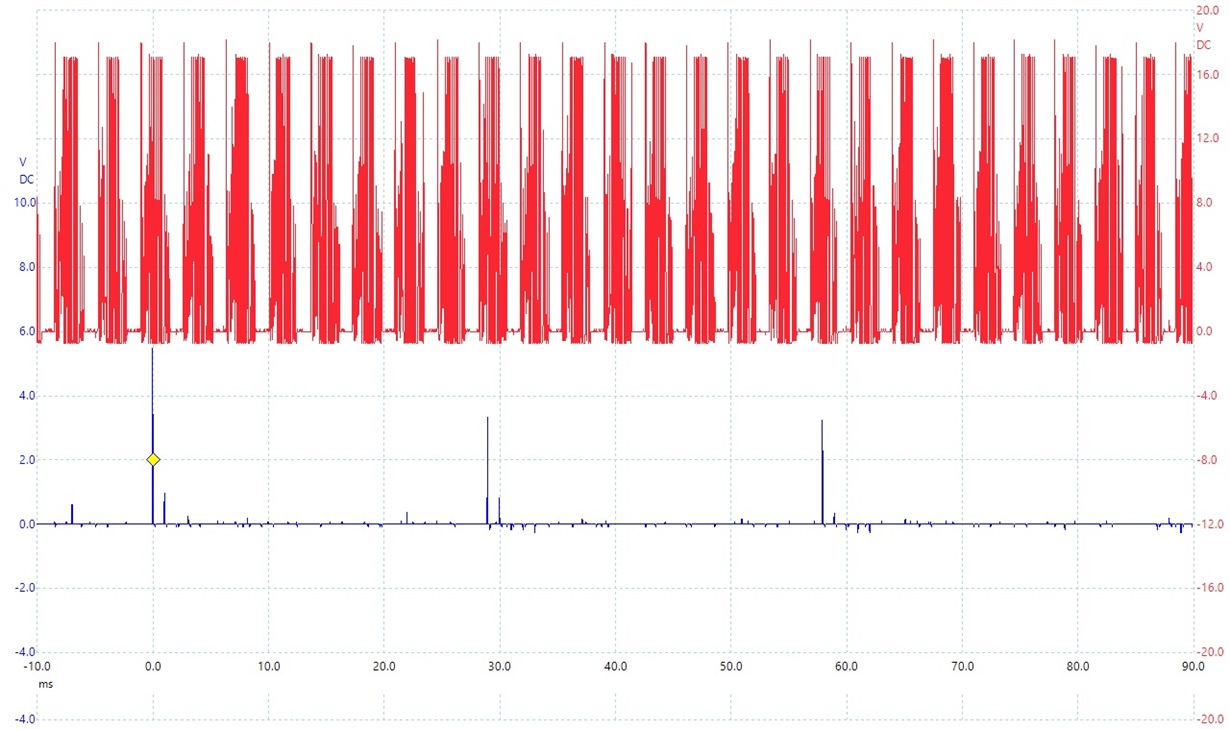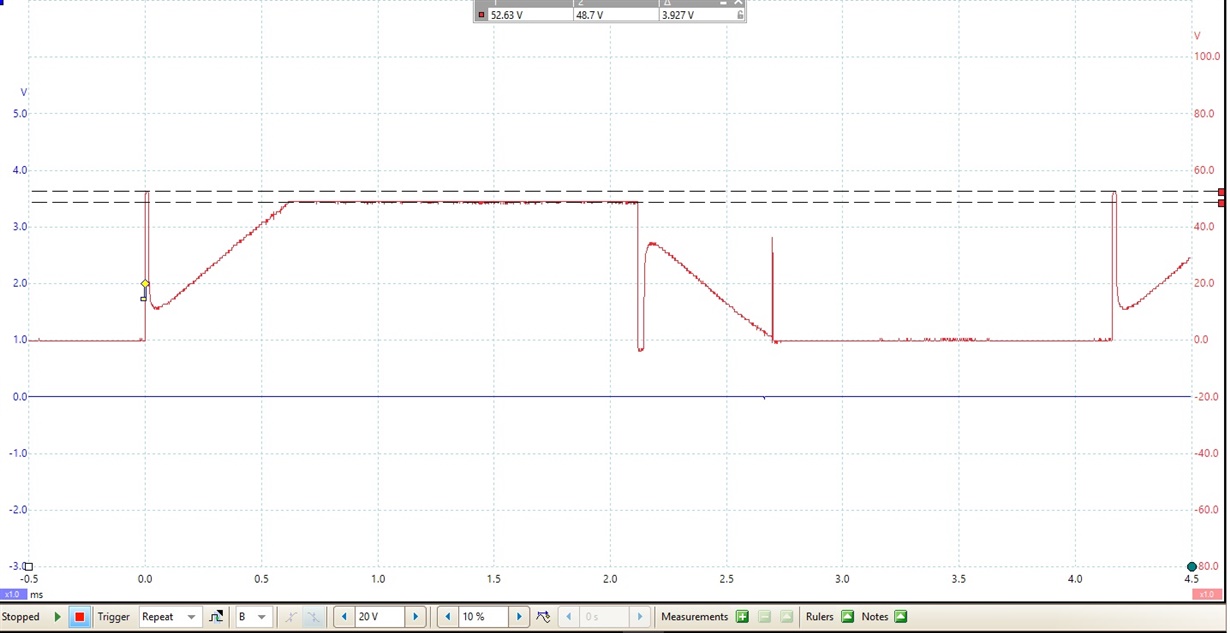Other Parts Discussed in Thread: CSD19534KCS,
Hello
I have some hardware designed around the DRV8303 and I have the motors running smoothly, however as I increase PVDD (to less than 55V with a small Nema17 sized motor running no load even) the GVDD voltages not only drops down to 2.3V and stays there. It then gives me a fault and it also seems to be damaged permanently as even after trying to reset and leaving the power off the 11V does not come back.
I am using CSD19534KCS fets with the bottom set all connected to a common LSS for current measurement through a single shunt.
Below I have attached a Phase Waveform,
The first I noticed was the BEMF does look a little noisy but I put this down to the unshielded motor wires.
The second thing I noticed was the right hand slope being slightly lower than the left, this may be a slightly timing ussie so I will take a look at this in the programming.
Finally I noticed that the bottom of the phase drops down below GND.This is Odd and I am not sure how this has happened. There are no GND loops (that I can tell) an I am nnot sure if perhaps this is the cause for the GVDD failure?
I have also noticed that the charge pump fails as well as CP2 drop from around 10V to the same low 2.3V ish.
This has happened to a couple of PCB's now so it cant be a one off failure.
Thanks for you help


